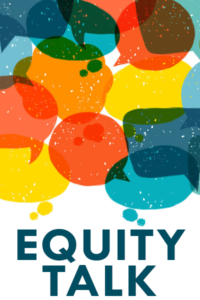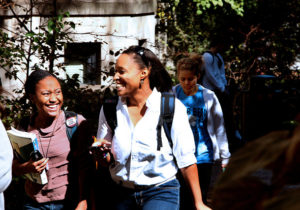Supporting Diverse Communities during the COVID-19 Pandemic
The COVID-19 DEI Crisis Action Framework recommendations to “make culturally relevant decisions” during each step of the decision-making process and to “support diverse communities” are key considerations when responding to and emerging from a crisis.
The response of the Department of Pediatrics and Children’s/VUMC to the COVID-19 pandemic highlighted the importance of various intentional efforts undertaken around diversity and inclusion over the past decade. These prior actions include the development of the Pediatric Office of Inclusion and Health Equity, the expansion of onsite and remote interpreter services (video and phone), the provision of patient education and discharge instructions in multiple languages, more robust social work and case management to support our complex and most vulnerable patients, as well as access to a broader network of mental health and behavioral health services for our patients. These important services contribute not only to the wellbeing of the community of the patients we serve but are also important for the wellbeing of providers and other health care professionals.
In immediate response to patient needs, our Division Chief, Shari Barkin, MD, MSHS, created several working groups of medical providers (physicians, nurse practitioners, and social work). Collectively, the groups included team members with diverse characteristics in terms of family structure, racial-ethnic and cultural backgrounds, language fluency, community connections, and interests. The COVID-19 related efforts thus tapped into providers’ passions for what makes them unique.
The groups first worked to identify gaps in patient access to information related to preferred language, medical literacy, familiarity with or access to technology, and the intentional scaling down of clinic visits to help prevent virus spread. As an example, a telehealth visit through a preferred healthcare portal can be an effective means of providing care for certain medical conditions while practicing “social distancing;” however, a patient who speaks and reads a language other than English, or a family that does not have internet access, an email account, or a device equipped with a camera and microphone, may be left out.
After identifying potential gaps, we needed to better understand specific concerns and questions that were a priority for our patient community. For example, a parent’s main concern may not be the care of a sick child, but rather the safety of the family if the caregiver is an essential worker, food insecurity in the face of recent unemployment, or lack of transportation to needed resources. Additional deeper concerns, less likely to come to the fore, may be one of countless mental health concerns such as fear of losing access to medical supplies, xenophobia or discrimination, and heightened risk of domestic violence or child abuse exacerbated during periods of confinement.
The third task was to then try and address such gaps in innovative ways. This included not only harnessing the institutional services outlined above, but creating and expanding our networks and creating new synapses both within VUMC, such as the Office of Health Equity, and outside of Vanderbilt: Contacting community organizations and identifying community leaders who could interpret and transmit information bi-directionally; developing processes to incorporate interpreters into telehealth visits; compiling, curating, and disseminating internally and externally reliable age-appropriate patient education materials in several languages and formats. Intentionally, information was obtained that not only addressed the medical aspects of COVID-19, but also the financial, parenting, and mental health needs that families may have.
The stress and strains of the COVID-19 pandemic present opportunities for institutions to continue to grow into new spaces, and to learn about gaps and implicit biases. We need to learn what we don’t know, in order to expand our skills and effectiveness to be better providers of care to our patient community. If we are to achieve equity in health and healthcare, we will need to collect accurate and timely data to identify health inequities, continue to broaden and strengthen internal and external partnerships, and assemble and leverage the experiences of diverse teams to inform, implement, and evaluate every step of what we do. Furthermore, supporting the careers and professional development of faculty from a diverse array of backgrounds is important, as faculty are a main interface between institutions and their very diverse patient communities.
Adriana Bialostozky, MD, Assistant Professor, Kecia N. Carroll, MD. MPH, Associate Professor, Director of Faculty Inclusion and Diversity in the Pediatric Office of Faculty Development, Aida Yared, MD, Associate Professor

Creator: Pixabay






0 Comments